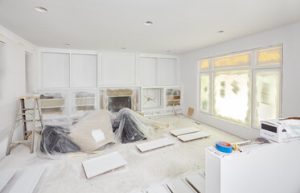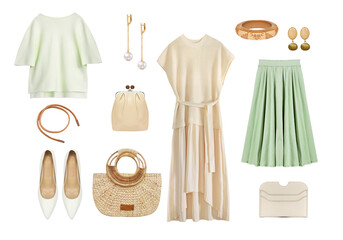Cabinet painting is a rewarding home improvement project that can transform your kitchen into a vibrant and inspiring space. However, it requires patience and attention to detail, along with specialized tools and precise application methods.

Choosing a professional is an excellent way to save time and avoid costly mistakes, as well as ensure that your cabinets are painted to perfection. Contact Modesto Cabinet Painters to learn more.
Cabinet painting is a complex and time-consuming process that requires a high level of skill and attention to detail. It involves a variety of steps, including sanding and priming, as well as applying multiple coats of specialized paint. Hiring professional cabinet painters will ensure a beautiful, flawless finish that is long-lasting and durable. They also have extensive experience working with various materials and can offer a variety of customizations to suit your vision. This allows you to create a unique and customized look while enhancing your home’s value and appeal.
A fresh coat of paint can transform a room and dramatically improve its appearance. However, a poorly executed project can result in visible brush strokes and other flaws that detract from the overall look and feel of your space. Hiring a pro for cabinet painting will save you both time and money in the long run, as it reduces the need for costly touch-ups or repairs. Experts know how to properly prepare surfaces and apply paint evenly, resulting in a professional-looking finish that will last for years.
Cabinet painters are also experienced in a wide range of finishes and can help you choose the right color to complement your décor. They can recommend a color that is both timeless and trendy, or they can help you achieve a more sophisticated look by matching your cabinets to other elements in your kitchen or home. In addition, professional painters will use high-quality paints that are designed to stand up to moisture and wear.
Compared to budget shortcuts, a professional paint job will deliver a longer-lasting and more attractive finish that adds to the overall value of your home. This is especially true if you plan to sell your home in the future, since a fresh cabinet look is one of the most important factors potential buyers will consider.
Hiring a professional to handle your cabinet painting project will save you the hassle of moving furniture and disrupting your daily routine during the work. This can be a huge benefit if you are trying to maintain a busy lifestyle while undergoing a major remodeling project.
Saves You Time
Painting cabinets is a time-consuming process that takes careful planning and skill to accomplish well. Professional cabinet painters are skilled at the process and have high-end tools that allow them to complete projects faster than homeowners, while delivering better results. This saves you valuable time, allowing you to enjoy your newly-painted kitchen sooner.
Unlike walls, ceilings, and trim, cabinets are designed for constant use in high-visibility areas. This means that the paint used must be durable and can stand up to high levels of moisture. Professional cabinet painters understand the importance of thorough prep work, including degreasing and sanding, as well as applying multiple coats of specialized paint to ensure lasting quality. Homeowners often skip these steps and end up with flaws like peeling or bubbling, which may require costly repainting.
Hiring a professional kitchen cabinet painting service will also save you time by avoiding mistakes that could delay the project or cause a mess in your kitchen. This is especially important for those who aren’t experienced with painting, as it can be difficult to know which products and techniques to use if you’re new to the process.
A professional kitchen cabinet painting company can avoid these issues by using a precise process that will provide you with smooth, flawless results from start to finish. Their knowledge of the best techniques, materials, and tools will also help them complete the job quickly and efficiently with minimal disruption to your daily life.
For the most accurate results, a professional kitchen cabinet painter will also use high-quality, premium paint that is easier to apply than conventional products. This type of paint can last longer, resist chipping and peeling, and offer a smooth, vibrant appearance that will stand the test of time.
For a truly seamless look, a professional will also sand and clean the surfaces of your cabinets before they begin painting. This is one of the most critical steps and something that is often overlooked by DIYers who try to cut corners or shorten the project’s duration. A professional will take the time to thoroughly sand and clean each surface before applying any primer or paint, which ensures a smooth and beautiful finish that will last.
Avoids Mistakes
Painting your cabinets is a great way to refresh your kitchen and add value to your home. But if you want your new look to last, proper preparation is key. Insufficient prep work is one of the most common mistakes homeowners make when painting their cabinets.
Failing to sand, clean, and prime before applying paint will result in a poor-quality finish that chips, peels, and scratches easily. Preparation is also key when it comes to choosing a paint color. It’s important to test the color in the space where it will be used to ensure it looks good in all lighting conditions.
Another mistake is using the wrong type of paint for cabinets. Cabinet paints aren’t your standard wall paints, and they require a special process to ensure they bond properly, cure correctly, and stand up to everything from pasta sauce splatters to toddler fingerprints.
Choosing the right paint sheen is also essential. Matte paint may seem trendy, but it’s not very durable in a busy kitchen, and it tends to collect grease marks and smudges faster than other sheens.
Finally, it’s essential to apply thin coats and wait the recommended amount of time between each application. Applying thick coats will result in visible brush marks, uneven drying, and drips. Professionals take the time to apply thin, even layers and allow each coat to dry fully before reapplying.
Using the wrong kind of materials is also a common mistake. Cabinets need a special, durable paint to prevent stains and odors, and using a regular house paint will result in a chipped, cracked, or dull finish. Professionals use high-quality materials specifically designed for cabinetry, ensuring a long-lasting, beautiful finish.
Hiring a professional to do the work will save you time and money, and it will ensure that your cabinets look stunning for years to come. If you’re ready to update your kitchen with a custom paint job, contact us today for an estimate. We look forward to turning your cabinet dreams into reality!
Boosts Your Home’s Value
The kitchen is a key focus for buyers, and outdated cabinets can be a major turnoff. A fresh coat of paint, however, can instantly boost the look and feel of a home while also increasing its overall value.
Professional cabinet painters have the skills to deliver a high-quality finish that stands up to heavy usage and daily exposure. They’re trained to handle the intricacies of cabinet painting, from thorough prep work (like degreasing and sanding) to using specialized tools and techniques for applying a smooth, even coat. This attention to detail makes a difference in how long your new cabinet color will last, protecting against peeling and bubbling down the line.
Additionally, unlike extensive home renovations, repainting your cabinets is a quick project that can be done in just a few days. This allows you to enjoy the modern, updated look of your space without weeks or months of disruption and mess. It’s also a more environmentally friendly option, as you don’t have to dispose of your old cabinets or use chemicals that could be harmful to the environment and your family.
Finally, many cabinet painters offer a range of customization options, like glazing and antiquing, that can transform your cabinets into standout features in the room. These unique finishes are often difficult or impossible to replicate with a DIY paint job, and they can add character that helps your home stand out in the real estate market.
As a bonus, choosing to hire a professional to repaint your cabinets can help you save money on remodeling costs down the line. Replacing cabinets can cost thousands of dollars, but a simple repaint will keep them looking great for much less. This is a smart investment that can pay off big time down the road, especially if you’re considering selling your home in the future.
When it comes to boosting your home’s value, few projects offer the same return on investment as repainting your cabinets. Cabinet painters are experienced in revitalizing dated kitchens and bathrooms to provide an impactful upgrade that’s easy on your wallet.

